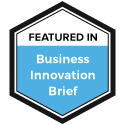From Spotting to Solving to Owning: The Evolution of Impactful Leadership
In every organization, there’s a spectrum of how people engage with problems. Some point them out. Others analyze and propose solutions. And then there are the few who roll up their sleeves, take full responsibility, and drive change to the finish line.
These aren’t just behaviors — they’re levels of leadership maturity and impact. Welcome to the evolution: Problem Spotter → Problem Solver → Problem Owner.
The Problem Spotter
Everyone knows a problem spotter. They’re often the first to identify what’s broken, inefficient, or misaligned. They highlight risks early and ask the hard questions. But here’s the catch: spotting a problem without taking any steps toward resolution doesn’t move the organization forward — it just creates noise.
Spotters bring awareness, but not progress.
Too often, spotters stop at critique. They get stuck in loops of complaint or apathy, especially when they don’t feel empowered to offer solutions. But power isn’t given — it’s practiced.
Want to grow beyond this stage? Ask:
- What could be done here?
- How would I approach this if I had to fix it?
Even proposing small fixes trains your brain to shift from criticism to constructive thinking.
The Problem Solver
Solvers go one level deeper. They bring frameworks, suggestions, and strategies. They are critical thinkers who imagine what could be and articulate it clearly.
Solvers are incredibly valuable — but only if their ideas don’t stay theoretical.
Without follow-through, a brilliant solution is just intellectual decoration. Organizations are full of “PowerPoint geniuses” whose slide decks look great but never make it to execution. And while they may earn some recognition, their value has a ceiling.
To evolve, solvers must embrace ownership. Ask:
- Can I lead this initiative to completion?
- What would it take to execute this, not just ideate it?
The Problem Owner
Problem owners are rare. They not only identify and solve the problem — they own the outcome.
They take responsibility. They pull in the right people. They deal with the messiness. They make things happen.
Problem owners are the engine behind real change. And in nearly every organization, owners are the ones who get promoted, trusted, and remembered. Not because they talk a big game, but because they play it and win.
They know that leadership isn’t a job title — it’s the act of turning insight into impact.
The Promotion Curve
While each role adds value in its own way, the level of impact — and likelihood of advancement — varies greatly:
- Problem Spotters (~50%)
Common but often stuck. Without shifting into solution mode, their insights rarely lead to change — or recognition. - Problem Solvers (~35%)
Valued for their thinking and ideas, but without action, their impact plateaus. Solvers are often trusted advisors, but not always seen as leaders. - Problem Owners (~15%)
Rare and indispensable. These individuals turn problems into progress and are the ones most often promoted, trusted, and asked to lead.
The path is clear: the more ownership you take, the more influence — and opportunity — you create.

The Path Forward
If you’re a Spotter:
- Don’t just raise issues — bring ideas. Even imperfect ones.
- Be the person who comes to the table with, “Here’s what I noticed, and here’s one way we might approach it.”
If you’re a Solver:
- Volunteer to lead a small pilot.
- Build muscle memory around execution — timelines, resource wrangling, iteration.
- Learn to navigate the human element: alignment, resistance, communication.
If you’re an Owner:
- Teach others how to take ownership.
- Build teams that operate with the same sense of purpose and accountability.
- Scale your impact by enabling more problem owners.
In Self-Managed Teams, Ownership is the Currency
In traditional organizations, structure can compensate for a lack of ownership — managers chase deadlines, assign tasks, and enforce accountability. But in a self-managed organization, the model only thrives when people operate like owners.
There’s no hierarchy to push things forward — just individuals who choose to.
That’s why identifying whether someone is a spotter, solver, or owner is critical in a self-managed culture. The success of the team depends on individuals stepping up, not waiting to be told.
Leaders (formal or informal) must:
- Encourage self-awareness and honest reflection
- Create safe space for people to take initiative
- Coach teammates on how to evolve from spotting to solving to owning
Because when everyone operates like a problem owner, you don’t need layers of oversight — you have momentum, trust, and shared accountability.
That’s the power of ownership in action.
Final Thoughts
Ask yourself:
- Which one am I today?
- Which one do I want to be?
- What’s the next step in my evolution?
Spotting and solving problems are valuable skills — but ownership is a mindset that transforms you from a thinker into a leader.
The world doesn’t need more critics.
It doesn’t need more theorists.
It needs more doers with ownership.
Because real change doesn’t happen when someone points out the problem — it happens when someone takes it personally and gets it done.

